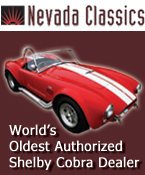
04-21-2013, 12:23 PM
|
|
CC Member

|
|
|
Join Date: Apr 2011
Posts: 1,092
|
|

 Not Ranked
Not Ranked
 Preferred Dyno Pull RPM Range w/Data
Preferred Dyno Pull RPM Range w/Data
As cobra replica owners with motors built to perform, tell the forum what RPM range you are interested in for Dyno Pulls to measure your engines performance.
1. 4500 up to your specified max. RPM
2. 4000 up to your specified max. RPM
3. 3500 up to your specified max. RPM
4. 3000 up to your specified max. RPM
5. 2500 up to your specified max. RPM
|


